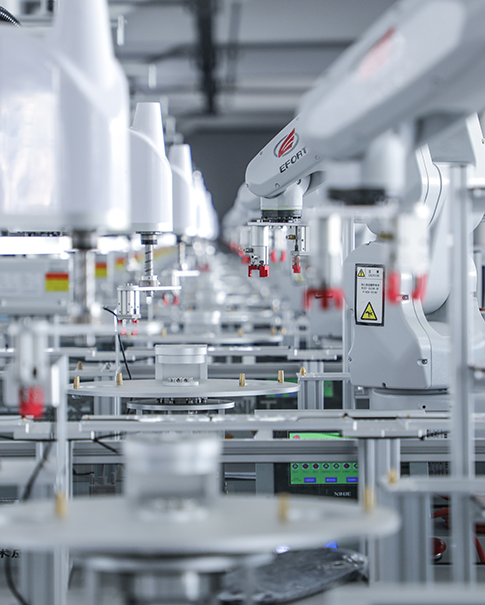Industrial robots have revolutionized the manufacturing industry, offering significant improvements in flexibility, efficiency, and precision. These robotic systems have transformed production lines, automated complex tasks, and reduced human error in various applications. However, as with any advanced technology, robots are not immune to malfunctions. With an increasing number of robots being deployed in industrial environments, the risk of malfunctions has risen, making it crucial for manufacturers to adopt proactive measures to prevent such issues. In this article, we will explore key strategies to reduce robot malfunctions and ensure that industrial operations continue to run smoothly and safely.
Robots can experience malfunctions due to a variety of factors, including human error, programming issues, mechanical failures, power disruptions, and environmental factors. While some malfunctions are inevitable, understanding the root causes can help in minimizing their occurrence and mitigating their impact.
Human Error: One of the leading causes of robot malfunctions is human error. This can happen during the initial setup, maintenance, or operation stages. Operators may inadvertently make mistakes while programming the robot or fail to follow safety protocols.
Control Panel Problems: Malfunctions can also arise from issues with the robot’s control panel. Incorrect configuration, software glitches, or outdated firmware can disrupt the robot’s functionality.
Mechanical Failures: Over time, wear and tear on mechanical components like motors, gears, and sensors can lead to mechanical failures, which may cause the robot to behave erratically or even stop functioning altogether.
Power Disruptions: Robots rely on a steady power supply to operate effectively. Power outages, voltage fluctuations, or improper grounding can cause the robot to shut down unexpectedly or fail to perform as expected.
Environmental Factors: External factors, such as temperature extremes, humidity, dust accumulation, or the presence of chemicals in the air, can interfere with a robot's operation. These factors can damage sensitive components, leading to malfunctions or inefficiencies.
Robot programming is the backbone of industrial automation. A robot's ability to perform complex tasks with precision relies on clear, accurate, and well-structured programming. Incorrect programming or errors in the activation of control panels can lead to catastrophic failures. Manufacturers should ensure that the programming is specific to the robot’s application and environment. Proper training and communication are essential for the personnel involved in robot setup and programming. By having skilled programmers who understand the robot’s operating parameters, plant managers can reduce the chances of errors during the installation and configuration phases. Furthermore, creating a systematic approach to testing and validating the program before deployment is key to ensuring smooth operation. A thorough testing phase helps identify potential errors or flaws in the robot’s behavior before it starts performing its tasks in a live environment.
Training plays a crucial role in preventing robot malfunctions. Well-trained operators and maintenance personnel are better equipped to recognize signs of failure and understand the causes behind them. When operators are educated on the robot's intricacies, they can troubleshoot common issues, respond to emergencies, and ensure that the robot operates within optimal parameters. Moreover, restricting access to industrial robots to authorized personnel can significantly reduce the risk of malfunctions. Implementing access control systems such as biometric authentication, facial recognition, or ID badges ensures that only trained individuals can interact with the robot. Unauthorized access can lead to accidental errors, misuse, or even cyber-attacks that could compromise the robot's functionality. Additionally, fostering a culture of safety within the workplace is critical. Operators should be encouraged to report potential issues immediately, and management should create a non-punitive environment where safety concerns can be addressed without fear of blame. This proactive approach can prevent minor issues from escalating into major malfunctions.
Routine maintenance is perhaps the most effective way to reduce the likelihood of robot malfunctions. By keeping robots in good working condition, manufacturers can ensure that components are regularly checked for wear and tear, lubrication is maintained, and sensors are calibrated accurately. Housekeeping Practices: Cleanliness is an often-overlooked factor in preventing malfunctions. Accumulation of dust, dirt, or debris on the robot can block sensors, damage delicate components, or cause mechanical jams. Simple housekeeping practices, such as regular cleaning, can greatly extend the lifespan of the robot and prevent malfunction due to environmental factors.
Proactive Maintenance: Instead of waiting for a malfunction to occur, plant managers should implement a proactive maintenance strategy. Robots should be routinely inspected for signs of wear and tear, and sensors should be regularly calibrated. With the aid of advanced diagnostic tools and sensors, technicians can track the robot’s health and detect potential issues before they escalate.
Use of Artificial Intelligence and Machine Learning: The incorporation of AI and machine learning in modern industrial robots has paved the way for predictive maintenance. Robots equipped with advanced diagnostics can now monitor their own performance and communicate diagnostic information to maintenance personnel in real-time. These systems can alert technicians about suboptimal performance, allowing them to intervene before a major failure occurs.
Self-Diagnosis and Autonomy: The future of industrial robots involves increasing autonomy, with machines being able to self-diagnose issues and even order replacement parts autonomously. This will significantly reduce downtime, increase efficiency, and improve overall safety in industrial environments.
Reducing robot malfunctions in industrial settings is an ongoing process that requires a comprehensive approach. From proper programming and training to regular maintenance and the use of AI-driven diagnostics, every aspect of robot management plays a vital role in ensuring optimal performance. By addressing these areas proactively, manufacturers can reduce the risk of malfunctions, improve safety, and maintain a high level of productivity. As technology continues to evolve, industrial robots will become even more autonomous, self-sufficient, and efficient, further enhancing their impact on the manufacturing industry.
 Network Supported
Network Supported